While 76% of urban apartment dwellers struggle to effectively integrate plants into their living spaces, you’ll find that strategic placement can transform your modern living room into a sophisticated botanical sanctuary. The key lies in understanding how to layer different plant varieties, heights, and textures while maintaining clean lines and visual balance. From dramatic living walls to minimalist floating shelves, these nine design approaches will help you create an elevated space that merges nature with contemporary aesthetics.
Contents
- 1 Create a Living Wall With Trailing Plants
- 2 Style Modern Planters in Groups of Three
- 3 Transform Empty Corners With Statement Floor Plants
- 4 Design a Plant-Focused Window Display
- 5 Incorporate Floating Plant Shelves
- 6 Mix Plant Heights for Visual Interest
- 7 Use Plants as Natural Room Dividers
- 8 Blend Plants With Minimalist Furniture
- 9 Showcase Botanical Art With Live Plants
Create a Living Wall With Trailing Plants
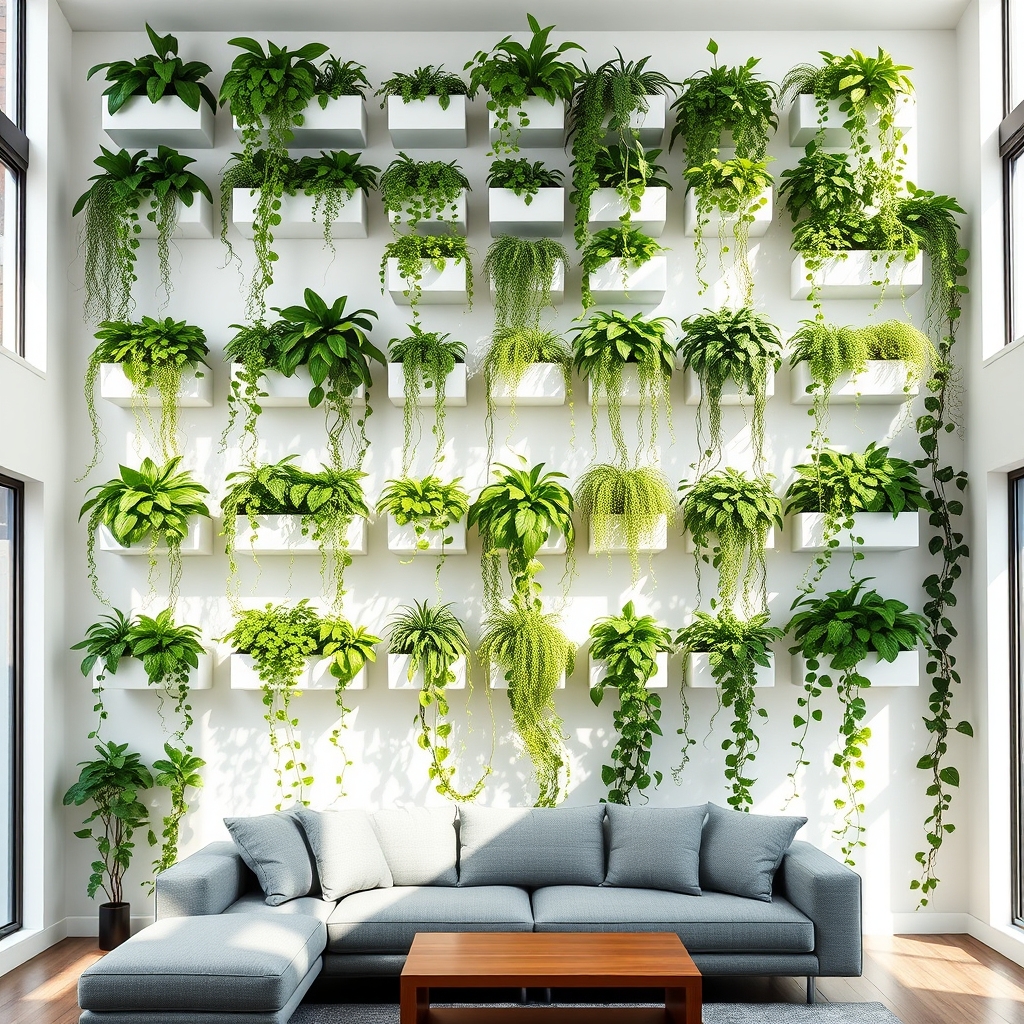
Trailing plants cascading down a vertical surface transform ordinary walls into vibrant, living tapestries.
The living wall design features multiple climbing and hanging plants arranged at different heights, creating layers of flowing greenery.
Plants like Pothos, String of Pearls, and English Ivy drape naturally downward, producing a waterfall effect of foliage.
The unique feature of this arrangement lies in its ability to maximize vertical space while adding depth and movement to interior spaces.
Wall-mounted planters, tiered shelving, or specially designed living wall systems provide the foundation for this dynamic display, allowing plants to grow and trail freely without taking up valuable floor space.
Style Modern Planters in Groups of Three
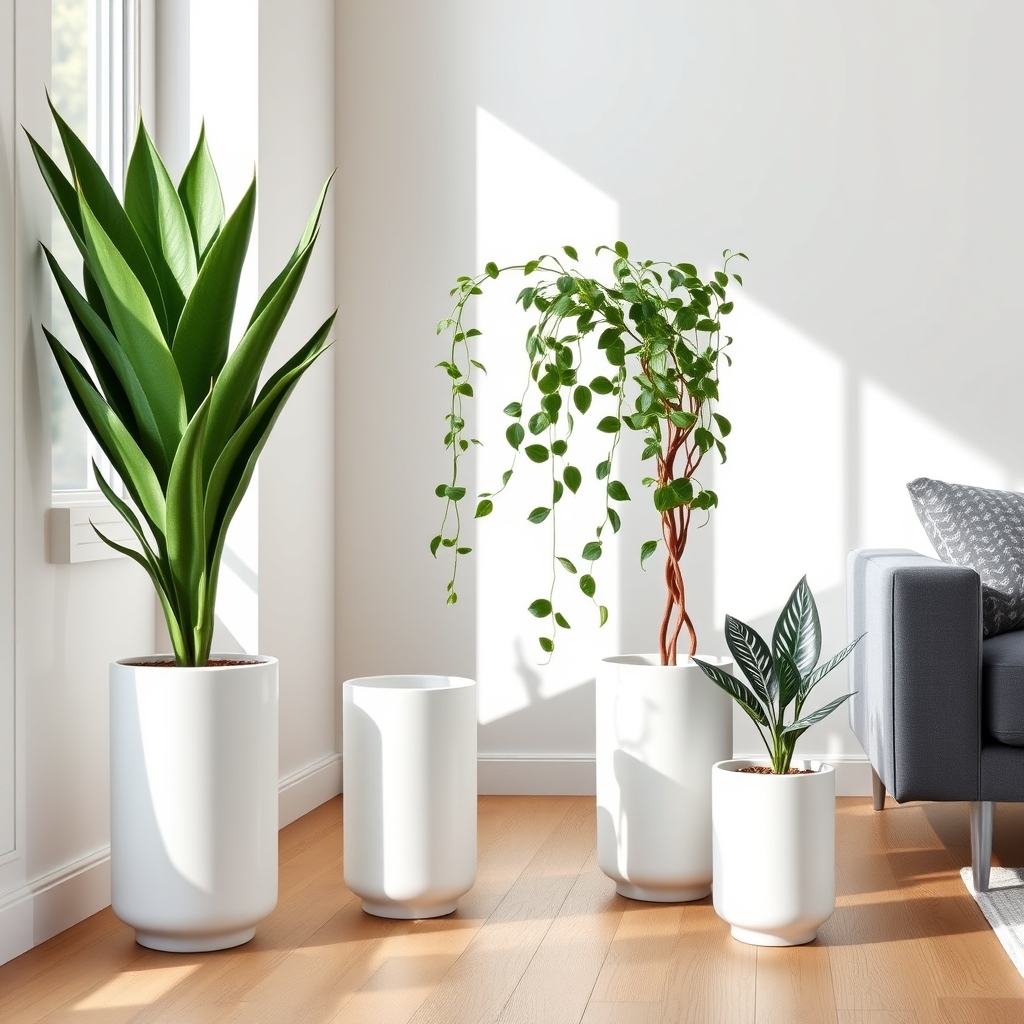
Styling modern planters in groups of three creates a visually balanced and intentional display that follows the classic design principle of odd-numbered groupings.
The arrangement typically features three contemporary planters of varying heights, sizes, or shapes, while maintaining a cohesive look through similar materials, colors, or design elements.
Plants can be mixed and matched within these groupings, such as combining a tall snake plant with a cascading pothos and a compact succulent.
The trio of planters can be positioned on floors, shelves, or tabletops, with careful attention to spacing and alignment.
This decorative approach works particularly well in corners, along windowsills, or as focal points in modern living spaces.
Transform Empty Corners With Statement Floor Plants
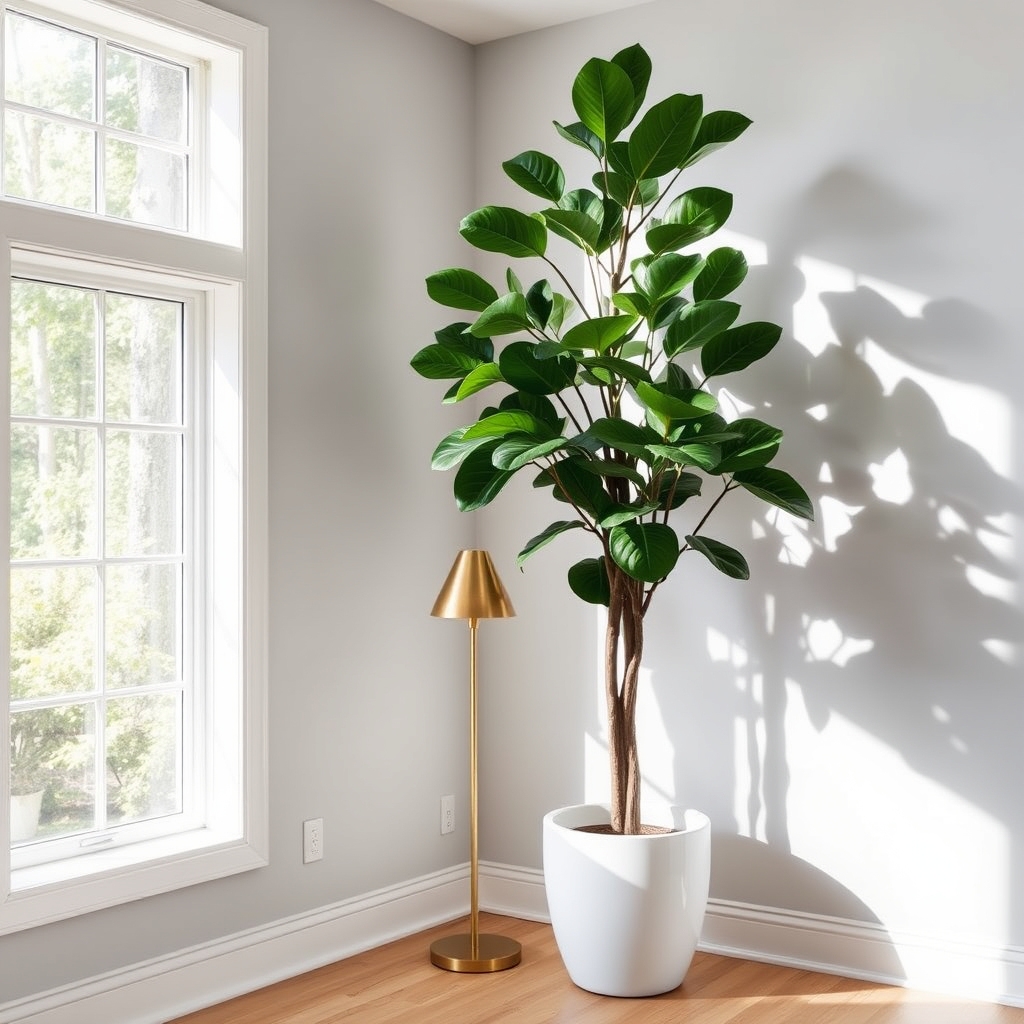
Statement floor plants in empty corners create dramatic vertical interest while maximizing previously unused space.
Large specimens like Fiddle Leaf Figs, Bird of Paradise, or Monstera Deliciosa serve as living sculptures, reaching heights of 4-6 feet or more.
These architectural plants feature bold, oversized leaves that draw the eye upward and add natural dimension to bare corners.
When placed in decorative planters that complement the room’s style, corner plants become striking focal points that soften angular walls while maintaining a clean, modern aesthetic.
Strategic uplighting can enhance their dramatic presence during evening hours by casting interesting shadows on surrounding walls.
Design a Plant-Focused Window Display

A plant-focused window display transforms ordinary windows into living artwork by strategically arranging houseplants of varying heights, textures, and colors.
Glass shelving or floating platforms installed at different levels create a multi-tiered effect, maximizing vertical space while allowing natural light to reach all plants.
Trailing plants like pothos or string of pearls cascade downward, while upright specimens such as snake plants or fiddle leaf figs provide architectural elements.
Small succulent arrangements occupy middle heights, creating depth and visual interest.
Modern planters in cohesive materials like matte ceramic or brass complement the display while maintaining a contemporary aesthetic.
The arrangement considers each plant’s light requirements, positioning sun-loving varieties closest to the glass and shade-tolerant species toward the room’s interior.
Incorporate Floating Plant Shelves
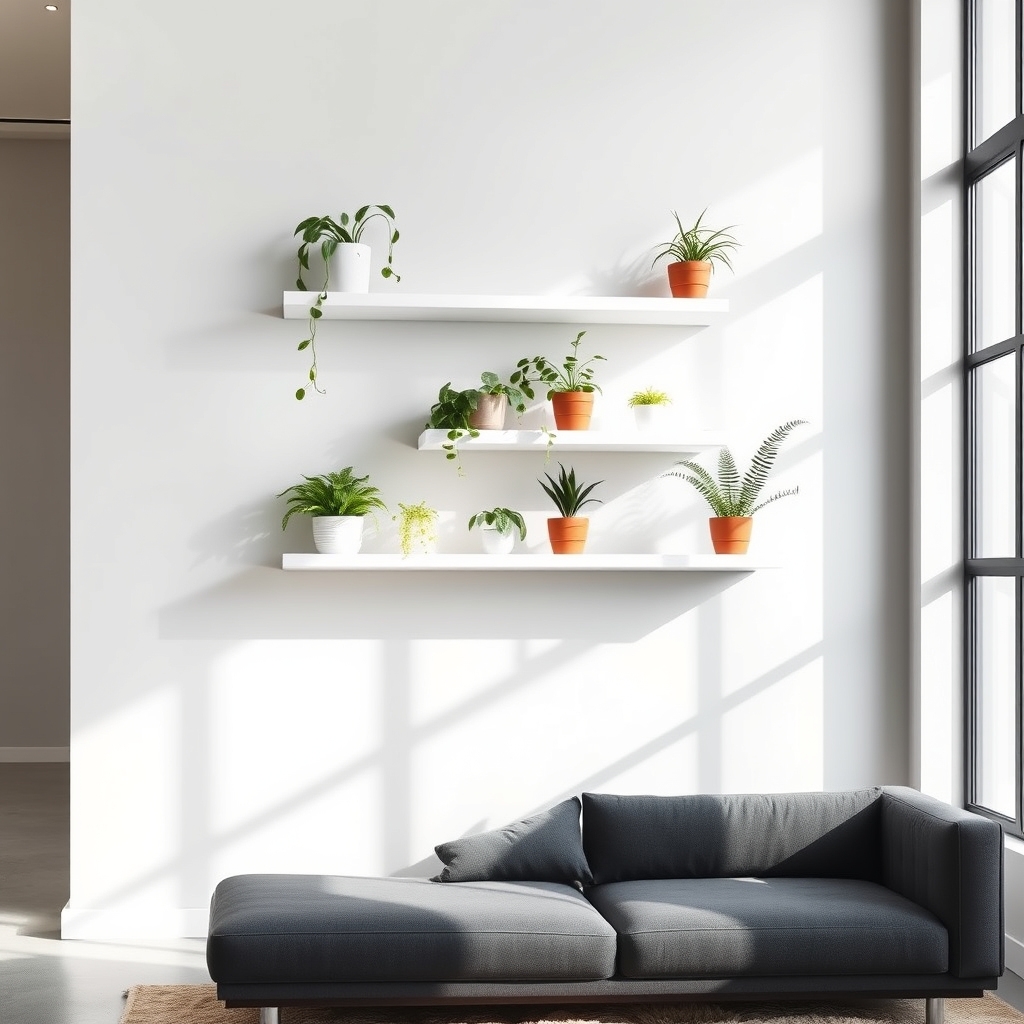
Floating plant shelves create a minimalist, contemporary look by appearing to extend directly from the wall without visible brackets or supports.
These sleek shelving units provide an ideal platform for displaying houseplants at varying heights, creating visual interest and maximizing vertical space.
The clean lines and seemingly suspended design make floating shelves particularly suitable for modern interiors, allowing plants to become living art pieces against the wall.
These installations can range from single floating boards to multiple staggered shelves, offering flexibility in arranging plant collections while maintaining an uncluttered aesthetic.
Mix Plant Heights for Visual Interest
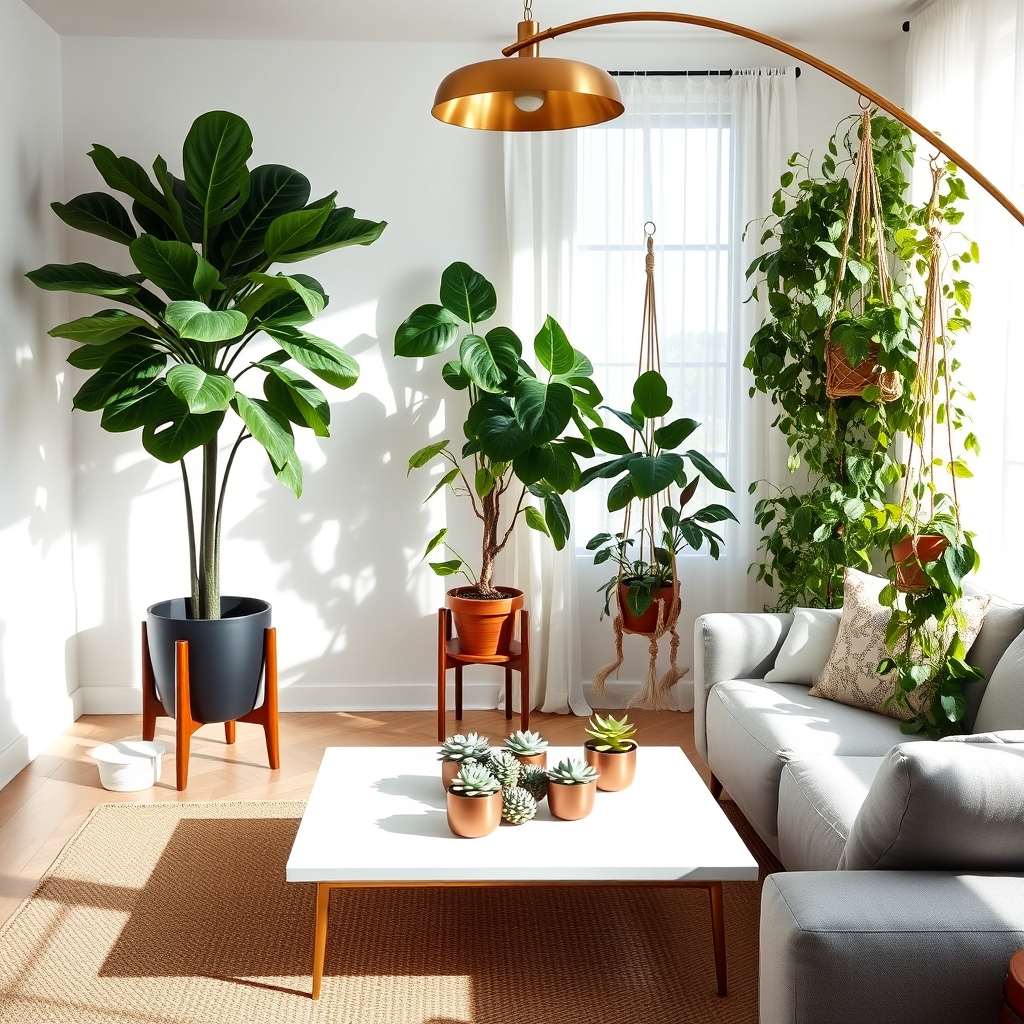
Mixing plant heights creates dynamic layers and depth in your indoor garden display.
Tall floor plants like fiddle leaf figs or bird of paradise can serve as anchor points, while medium-sized plants on stands or tables fill the middle ground.
Small succulents and trailing plants on shelves or hanging baskets complete the arrangement at eye level and above.
This varied vertical composition draws the eye upward, maximizes space usage, and prevents visual monotony.
Different heights also allow each plant to receive appropriate light exposure while creating natural divisions in the room’s layout.
Use Plants as Natural Room Dividers
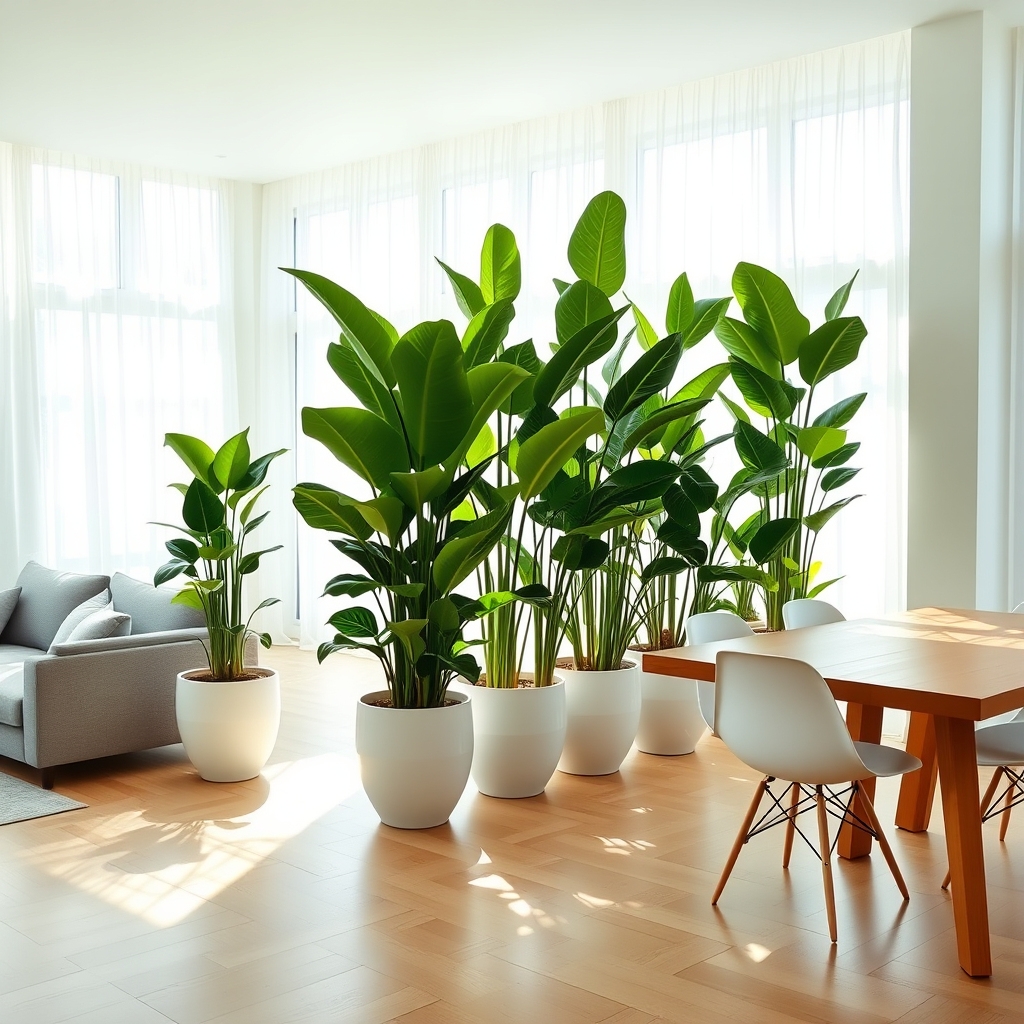
Using plants as natural room dividers creates organic, living boundaries in open-concept spaces without blocking light or constructing permanent walls.
Tall plants like bamboo, fiddle leaf figs, or snake plants can be arranged in a row or clustered formation to define separate functional areas while maintaining visual flow. These green dividers can be positioned in decorative pots of varying heights, mounted on plant stands, or placed directly on the floor to create layered barriers.
The arrangement works particularly well between living and dining areas, or to carve out a home office space. The living divider adds texture, improves air quality, and offers flexibility since the plants can be easily rearranged when needed.
Blend Plants With Minimalist Furniture
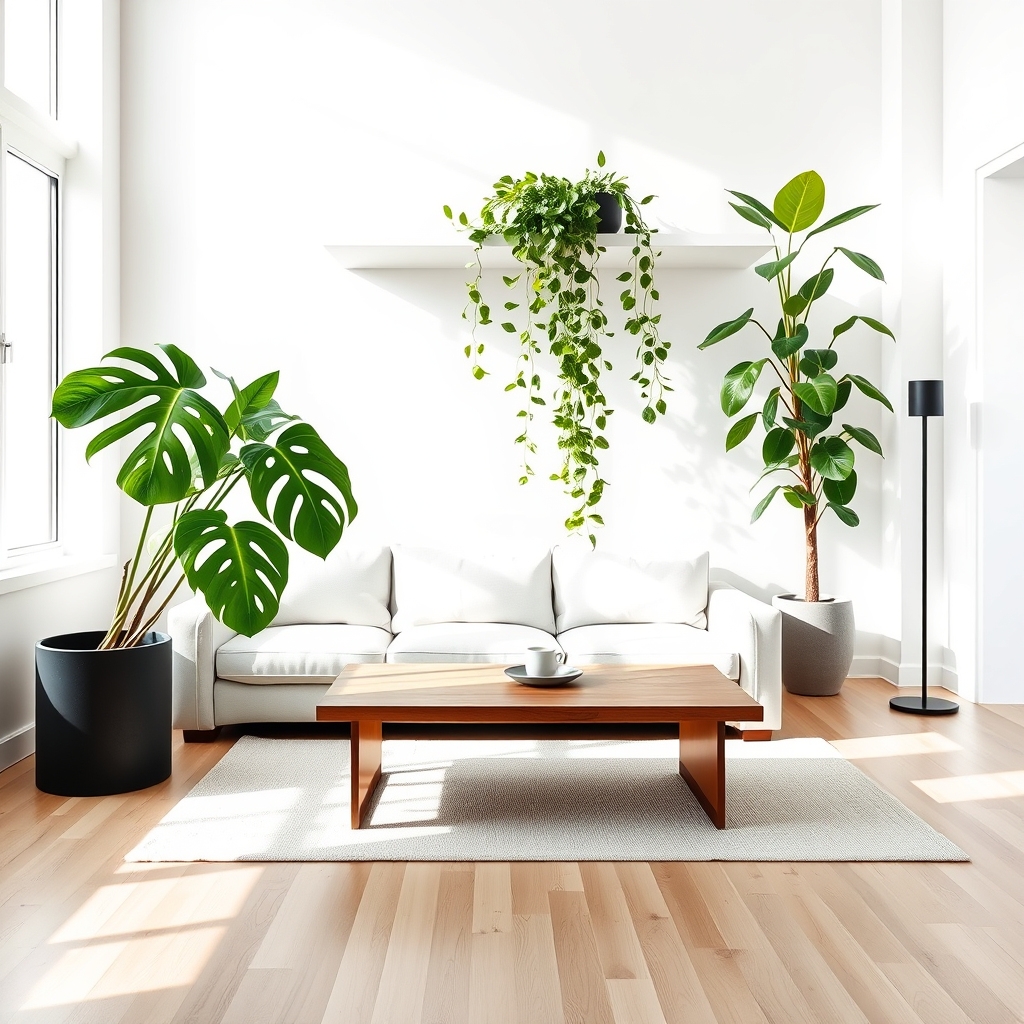
Blending plants with minimalist furniture creates a balanced aesthetic that combines organic elements with clean, simple lines. Large-leafed plants like Monstera or Fiddle Leaf Fig stand as striking focal points against white walls and sleek furniture pieces.
Low-profile planters in neutral tones complement modern furniture while allowing the plants to take center stage. Strategic placement includes positioning plants near geometric furniture pieces, using floating shelves for trailing varieties, and incorporating plants into empty corners where their natural forms soften angular room designs.
The contrast between verdant foliage and minimalist furniture pieces enhances both elements, creating visual interest without overwhelming the space’s clean aesthetic.
Showcase Botanical Art With Live Plants
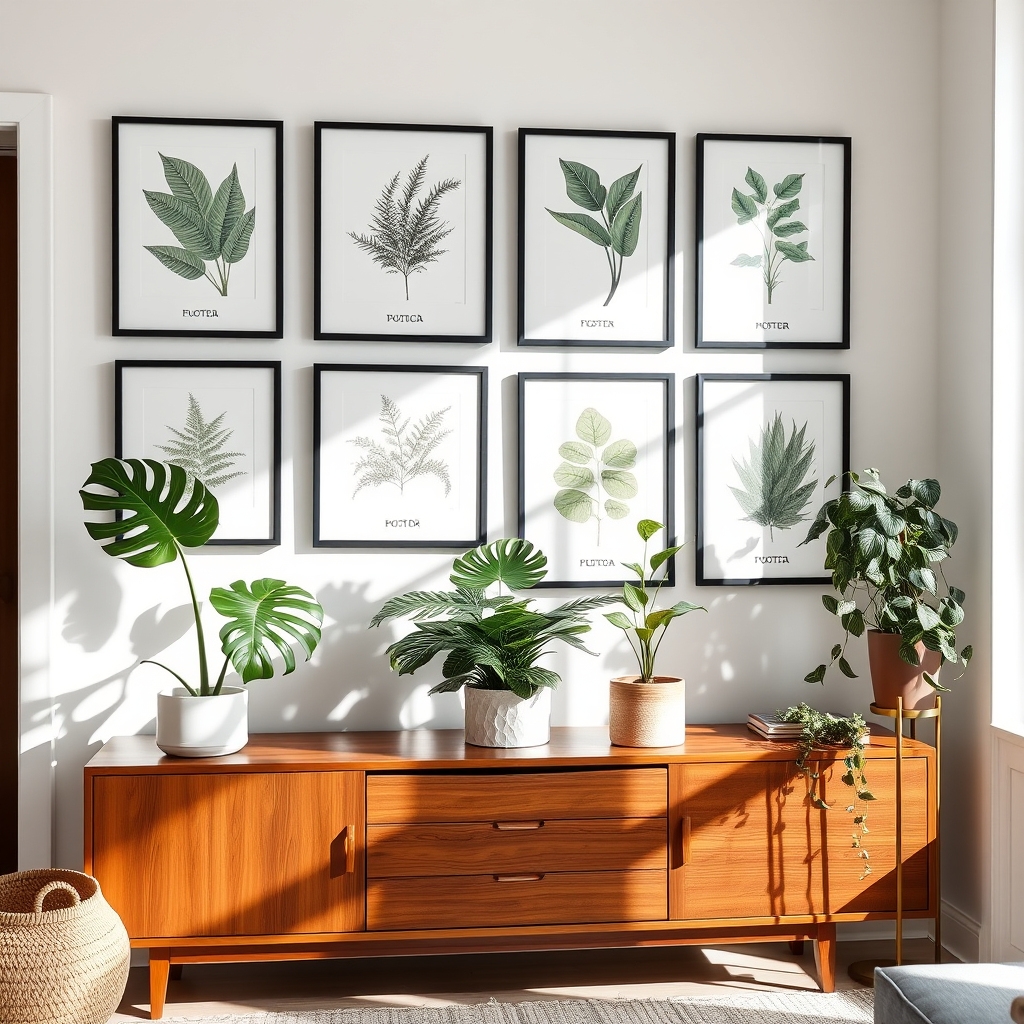
Combining botanical art with live plants creates a cohesive, nature-inspired display that elevates modern interior design. Framed botanical prints, illustrations, or photographs positioned near corresponding live plants establish a visual dialogue between art and nature.
The arrangement can feature vintage botanical sketches paired with the actual plant species depicted, or contemporary plant photography alongside thriving houseplants. This decorative approach works particularly well on gallery walls, where botanical artwork can be clustered with plants positioned on nearby shelves or stands.
The contrast between two-dimensional art and living plants adds depth and dimension to the space, while reinforcing the natural theme. Common pairings include monstera leaf prints with real monstera plants, or fern illustrations alongside potted ferns, creating an educational and aesthetically pleasing display.
Key features:
- Layered visual interest through mixed media
- Educational component linking art to live specimens
- Enhanced natural aesthetic
- Versatile styling options for various room sizes
- Opportunity to incorporate both vintage and modern elements
